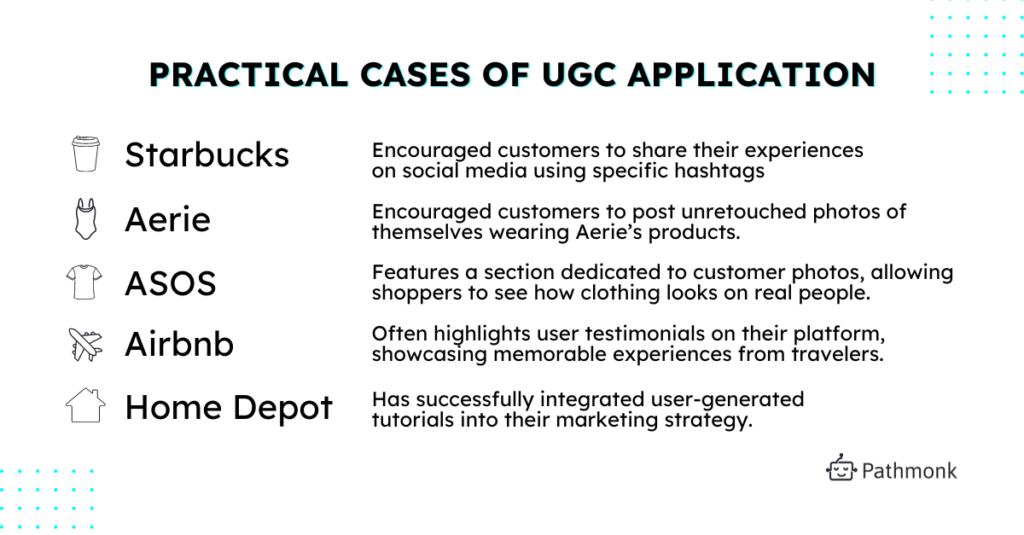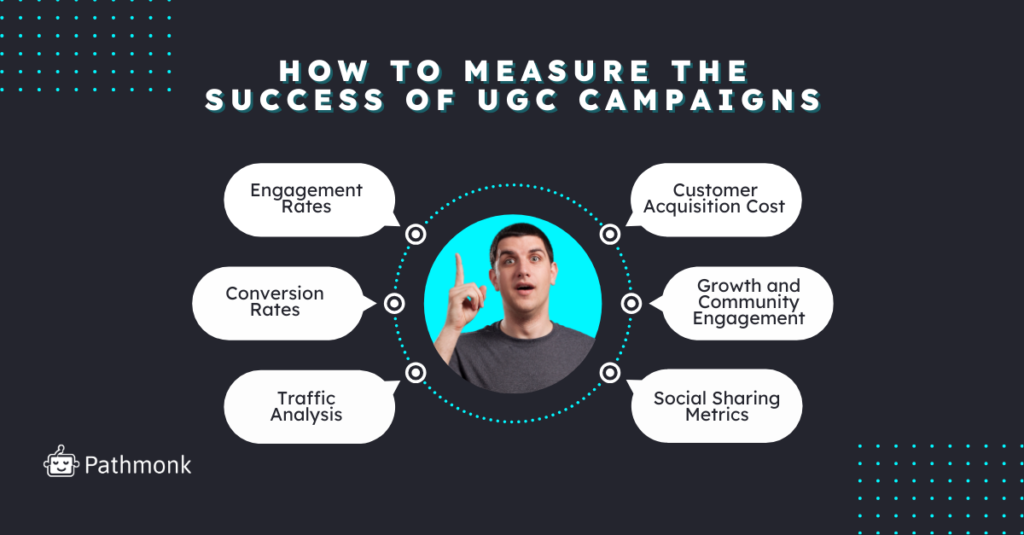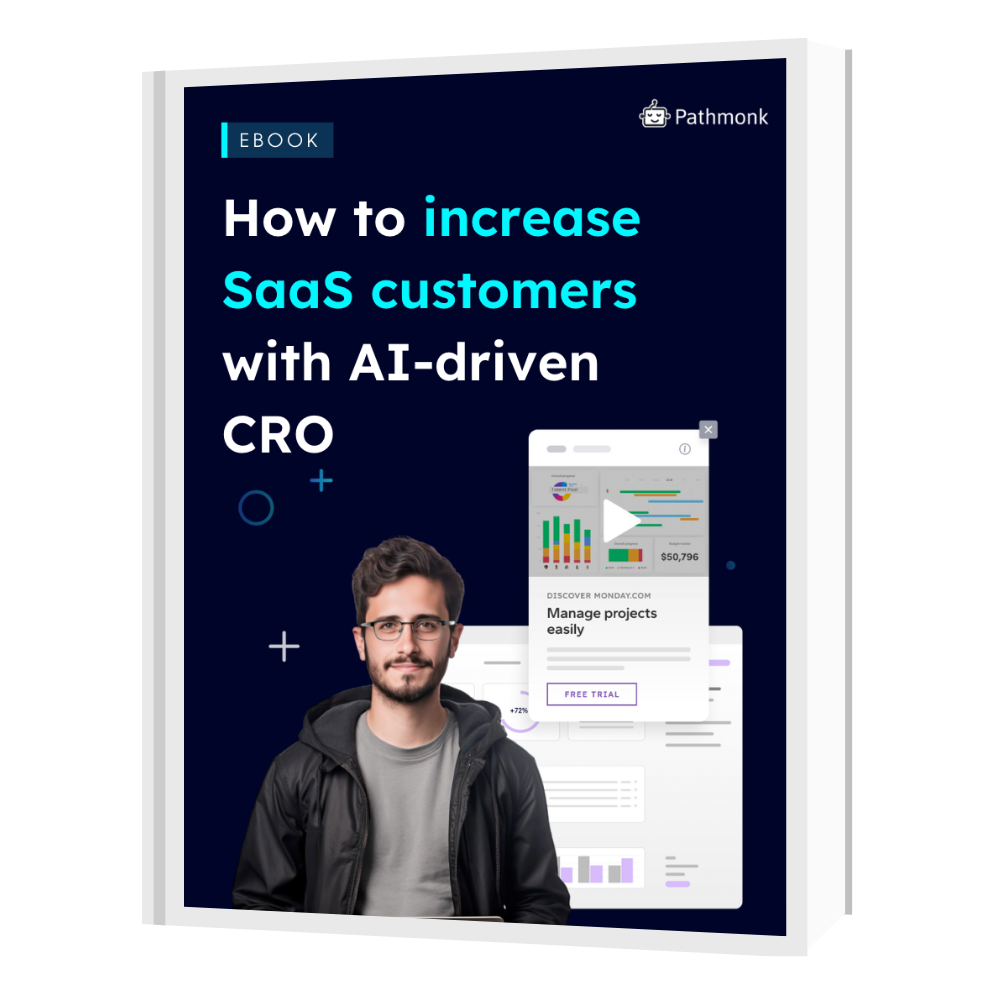
User-generated content (UGC) is a powerful tool that has transformed digital marketing. In an era where consumers are inundated with advertisements, the voice of the customer has become a critical factor in influencing purchasing decisions. In a 2024 report by TINT, 87% of consumers stated that user-generated content makes them more likely to make a purchase, highlighting the effectiveness of authentic customer content in driving sales. This statistic underscores the immense potential of leveraging UGC to boost sales on your website.
The authenticity of content created by actual users resonates more deeply with prospective buyers than polished marketing campaigns. UGC fosters a sense of community around your brand. In this article, we will explore how effectively applying user-generated content can significantly impact your sales figures. Let’s examine five compelling examples of how UGC can elevate your marketing efforts and drive conversions on your website.
Table of Contents
A Brief Overview of User Generated Content (UGC)
User-generated content refers to any form of content—be it reviews, images, videos, or social media posts—created by users of a product or service rather than by the brand itself. It’s the digital equivalent of word-of-mouth marketing, except it happens on a much larger scale and can reach audiences around the globe.
UGC is essential because it taps into the human psychology of trust. People are more likely to believe and engage with content created by their peers than they are with traditional advertising. Brands that leverage UGC effectively can foster genuine connections with their audience, increase brand loyalty, and drive sales.
How to Use UGC to Boost Website Sales
So, how exactly does user-generated content impact online sales? Simply put, it adds a layer of authenticity and social proof to your marketing efforts. When potential customers see real people using and enjoying your products, they’re more inclined to believe in their value. Research shows that UGC can lead to a whopping 29% increase in web conversions. This means that showcasing your customers’ content can significantly enhance your sales figures.
1. Customer Reviews and Ratings
- Building trust and credibility: When I browse a website, one of the first things I do is check out the reviews. Am I alone in this? I doubt it. Customer reviews act like a modern-day crystal ball, helping us predict whether a product will meet our expectations. Positive reviews build trust and credibility, making potential buyers feel more comfortable with their purchasing decisions. Brands like Amazon have thrived by encouraging customer reviews, allowing shoppers to gain insights from others who have walked the same path.
- How positive reviews influence buying decisions: A study by BrightLocal found that 86% of consumers read reviews for local businesses. It shows just how much influence positive reviews have on buying decisions. When potential customers see a slew of five-star ratings and glowing testimonials, they feel reassured about their choice. It’s like getting a recommendation from a friend!
Examples of Big Brands That Used UGC for Reviews
Consider how brands like Starbucks have harnessed UGC to drive their success. They encourage customers to share their experiences on social media using specific hashtags. This way, they can collect and showcase authentic reviews that resonate with new customers. Their website features sections for customer reviews that reinforce the positive experiences others have had, helping to drive more sales.
2. Social Media Content
- The power of social proof: Let’s talk about social media—the wild west of brand engagement. It’s a place where a single post can go viral and turn a product into the next big thing. Social proof is a powerful driver of consumer behavior, and UGC on social media amplifies this effect. When customers see their peers sharing and enjoying your products, it creates a ripple effect, driving traffic to your site and increasing sales.
- Encouraging user participation: To encourage customers to share their experiences, brands can employ a variety of strategies. Offering incentives, such as discounts or giveaways, can motivate users to post about their purchases. Creating branded hashtags can also foster a sense of community and make it easier to find UGC.
Success Stories of Brands That Excel in Engaging Users on Social Media
Take the #AerieREAL campaign by Aerie, for instance. The brand encouraged customers to post unretouched photos of themselves wearing Aerie’s products. This initiative not only showcased the brand’s commitment to body positivity but also created an incredible amount of UGC that resonated with customers. As a result, Aerie experienced a 20% increase in sales and a surge in brand loyalty.
Look at GoPro—this brand has mastered the art of engaging users on social media. They encourage customers to share their adventurous footage captured with GoPro cameras. The result? An avalanche of content that not only showcases their products but also creates a loyal community of outdoor enthusiasts who can’t get enough of their gear.
3. User-Generated Photos and Videos
- Visual influence on purchase decisions: A study by Google revealed that 67% of consumers say that images help them make purchasing decisions. User-generated photos and videos provide an authentic look at how a product performs in real life. This visual content is invaluable, as it helps potential customers envision themselves using your products.
- Showcasing products in real-life contexts: When potential buyers see user-generated visuals, they gain insight into how products fit into everyday life. This contextual storytelling helps bridge the gap between product features and real-world use, driving purchasing decisions.
Case Studies of Brands Leveraging User Visuals to Boost Sales
Let’s look at the clothing retailer ASOS, which showcases user-generated content on its website. They feature a section dedicated to customer photos, allowing shoppers to see how clothing looks on real people. This practice not only builds trust but also encourages customers to visualize how the products would fit into their own lives.
Brands like Coca-Cola have also runned campaigns that invite customers to share their Coke moments through photos and videos. The results have been astounding, as this content often goes viral and boosts brand visibility while enhancing the customer experience. The brand effectively showcases its products in relatable, real-life contexts that resonate with consumers.
4. Testimonials and Case Studies
- Personal stories and success stories: Personal testimonials are like gold for sales. When customers share their success stories about a product, it humanizes the brand and makes it relatable. People want to know how others have benefited from a product, and compelling testimonials can be the difference between a sale and a bounce.
- Detailed case studies: In-depth case studies can also demonstrate a product’s value effectively. Brands like Dropbox have successfully used case studies to highlight how their services have transformed businesses. By sharing detailed success stories, they provide potential customers with concrete examples of how their product can solve real-world problems.
Examples of Compelling User Testimonials and Their Impact on Conversions
Take the case of Airbnb. They often highlight user testimonials on their platform, showcasing memorable experiences from travelers. This practice not only builds trust but also enhances the perceived value of their listings. As a result, they have seen significant increases in bookings from potential customers who are reassured by these testimonials.
5. Community-Driven Content
- Creating a loyal brand community: Building a loyal brand community can be a game-changer. By creating forums, discussion boards, or community platforms, brands can foster engagement and encourage customers to share their experiences. This sense of community can lead to increased brand loyalty and, ultimately, higher sales.
- User-generated guides and tutorials: User-generated how-to guides and tutorials can also be incredibly valuable. When customers create instructional content, it adds credibility to your brand and showcases your product’s versatility.
Examples of Successful Brand Communities and Their Effect on Sales
Take Nike, for example. Their Nike+ community brings together runners from around the world to share their achievements and experiences. This community-driven approach not only encourages user participation but also helps Nike build a strong brand identity. The result? A dedicated following that drives consistent sales.
Consider the home improvement retailer Home Depot, which has successfully integrated user-generated tutorials into their marketing strategy. Customers share DIY project guides featuring Home Depot products, inspiring others to make purchases while building a sense of community around home improvement.

How to Integrate UGC into Other Marketing Strategies
Optimizing UGC for SEO
Incorporating user-generated content into your website can also improve your search engine rankings. When customers post reviews or share photos, it creates fresh, relevant content that search engines love. This can lead to better visibility and increased organic traffic.
For instance, websites like Yelp thrive on user-generated reviews, leading to high search engine rankings for local businesses. This visibility drives traffic and ultimately leads to increased sales.
Incorporating UGC in Ad Campaigns
Using user-generated content in paid advertising can enhance authenticity and trust. By featuring real customers in your ads, you create a relatable narrative that resonates with potential buyers.
Take the example of the beauty brand Fenty Beauty. They successfully used UGC in their advertising campaigns by featuring real customers wearing their products. This approach not only built trust but also created a diverse representation that resonated with a wide audience, leading to a significant boost in sales.
How to Measure the Success of UGC Campaigns
Measuring the success of UGC campaigns is essential for understanding their impact on your overall marketing strategy and ROI. Relying solely on qualitative observations isn’t enough; they need to employ specific metrics to gauge the effectiveness of UGC initiatives. Here are the key metrics to consider, along with an explanation of why each is important.

1. Engagement Rates
Engagement rates measure how actively your audience interacts with your UGC across various platforms. This includes likes, shares, comments, and overall interaction with posts that feature user-generated content. High engagement rates indicate that the content resonates with your audience, creating a community around your brand.
2. Conversion Rates
Conversion rates measure the percentage of users who complete a desired action after interacting with your UGC. This could include making a purchase, signing up for a newsletter, or downloading a resource. Tracking conversions from UGC-specific campaigns allows you to assess how effective the content is at driving actual sales.
Transform your SaaS CRO strategy with AI
Dive deep into the latest AI-powered trends and gain a competitive edge in the SaaS industry.

3. Traffic Analysis
Traffic analysis involves examining how UGC drives visitors to your website, and their stage on the buying journey. Tools like Pathmonk can help you identify the source of traffic, such as whether visitors come from social media posts featuring UGC or from direct links on your website; and also allow you to create AI-powered website experiences based on their likelihood to purchase your products.
4. Customer Acquisition Cost (CAC)
CAC measures the total cost of acquiring a new customer, factoring in all marketing expenses. When assessing UGC campaigns, it’s crucial to analyze how they affect your CAC. If UGC helps acquire customers at a lower cost compared to traditional marketing channels, it’s a strong indication of effectiveness.
5. User Growth and Community Engagement
Tracking the growth of your user community—such as followers, subscribers, or members in forums—can provide insights into the effectiveness of UGC campaigns in fostering a loyal customer base. Metrics to monitor include new followers gained after UGC campaigns and engagement levels within community platforms.
6. Social Sharing Metrics
Social sharing metrics quantify how often users share UGC across social platforms. This can include the number of shares, retweets, or reposts that UGC receives, as well as the reach of those shares. Higher sharing rates indicate that your content is compelling enough for users to share with their networks, which can lead to increased brand visibility and potentially attract new customers.
Offering AI-Powered Personalized Website Experiences to Increase Sales
As we perceived, UGC is a great way to drive qualified traffic for your website. But what if you could take full advantage of this content, not only to drive traffic, but to increase your website conversions? An outstanding personalized user experience will take your conversion rates to the next level, and turn those visitors into loyal customers.
Thankfully, Pathmonk allows the creation of micro-experiences, that are shown to specific customers at the time they need it the most. Using Pathmonk you can create micro experiences with UGC content you already have, generating an even more personal user experience. Combine UGC and AI-powered personalization to take your sales funnel conversions to the next level!
Increase +180%
leads
demos
sales
bookings
from your website with AI
Get more conversions from your existing website traffic delivering personalized experiences.

If you haven’t already embraced UGC, it’s time to start encouraging your customers to share their experiences. After all, who wouldn’t want to turn their customers into their best salespeople? Remember to create a concise strategy and align your efforts with other CRO initiatives to maximize your sales, and leave those competitors and their low conversion rates in the past!





